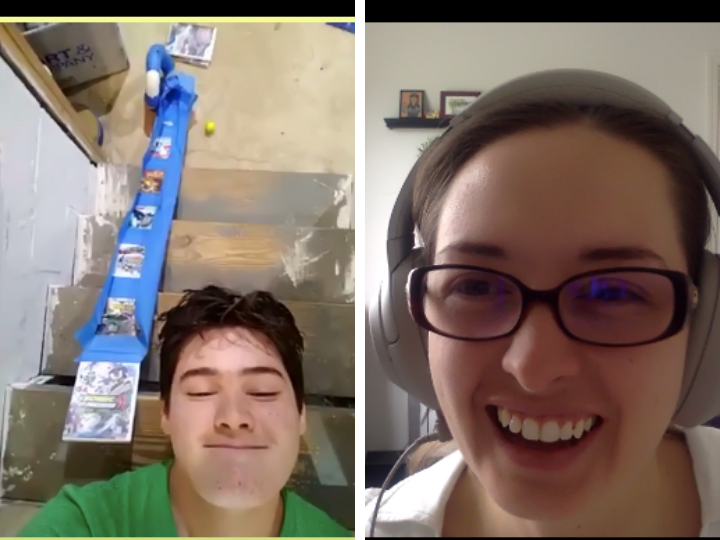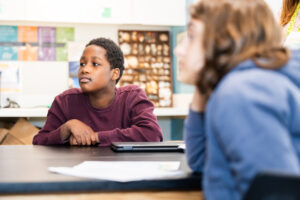Remote Learning – Tips and Lessons Learned
Shifting to distance learning has been an adjustment for students, staff, and parents. At The Sycamore School, we offer individualized instruction, so our unique challenge was determining how to offer the same level of support remotely, recognizing that:
- Many of our parents work full time, so they have limited ability to monitor and check in on their students while they’re working from home.
- Many of our students struggle with executive functioning skills, so we had to figure out how to get them into a routine that worked for them and their family;
Once it became apparent distance learning was not a short-term endeavor, we divided up our students between our staff. Each staff member was the point person for a small cohort of 10 students, checking in with them daily and helping them create and maintain a daily schedule. While this was a good starting point, it wasn’t always enough. Some students also needed help setting concrete goals, start-up help, and frequent check-ins. They needed to gauge success by work completed versus the amount of time sitting in front of a screen. After engaging in distance learning for six weeks, here are some of our most significant takeaways.

Tips:
Limit academic screen time: Students should not have more than three hours a day of academic screen time. Alternate academic screen time tasks with hands-on activities, breaks, and/or outside time. On our Virtual Fridays, we regularly ask students to select activities that pair their interests with non-screen learning. Such tasks have included cooking, nature walks, neighborhood trash cleanups, and sidewalk chalk art.
Individualization: One size does not fit all. Our parents come to TSS expecting their students to receive personalized learning. When it comes to distance learning, the same applies. We have worked closely with our students and families to create an individual schedule that works for both the student and their family.
Adjust expectations: It’s important to put distance learning into perspective. Every student reacts to distance learning in a different way. Some students are experiencing increased feelings of anxiety or stress and need time to focus on their mental health; academics need to take a back seat. For other students, engaging in academic tasks helps them keep some normalcy and routine to their day, which helps them feel better. Maintaining open and honest conversations with students and families is a key component to crafting a schedule that meets each student’s needs.
Make a plan that’s sustainable: At TSS, we initially made a plan, thinking we’d be engaging in distance learning for three weeks. Once it became apparent that this was our new normal, we adjusted our plan to make it sustainable for both staff and students. Our teachers were exhausted, trying to check in with students daily and, in some cases, virtually sitting with students while they were doing their work. At the same time, our students were missing interacting with peers and needed more connection to each other. As we adjusted to longer term remote learning, we had to collaborate regarding each student and their unique needs. We recognized that some students were okay with weekly staff check-ins, virtual group activities, and accessing staff during office hours. However, other students needed daily check-ins, work start-up help, and adjusted academic expectations.
Create opportunities for student interaction and engagement: Our students were missing seeing each other. So, teachers created group activities throughout the week, such as book talks, a Friday all school meeting, and lunch chats.
Provide social-emotional support: Several of our students were struggling to find their new normal and needed counseling support. Our school counselor scheduled meetings with students to check in with them. In some cases, they just needed someone to chat with. In other cases, they needed help with identifying coping strategies and support. Students regularly interact with our counselor, which allowed us to provide this support quickly and effectively.
Engage families: When brainstorming how best to support students, it’s crucial to also check in with parents. They are at home with their kids and often have valuable insights regarding how their child is doing and what supports might work best. Other parents are overwhelmed and benefit from having staff make suggestions and craft a plan that helps the student as well as the family.
As we reflect upon where we are in our remote learning journey, we are thankful for our amazing teachers. They have really shined throughout this challenging time. They quickly got to work identifying the unique needs of each student and then immediately started delivering to ensure our students were able to continue learning new content. While we’ve developed a solid operating plan that is working for us and our students, we know that these plans may need to be revisited as we all continue to adjust to our new normal. We must be flexible and forward-thinking in meeting the needs of our students.
Posted in:

